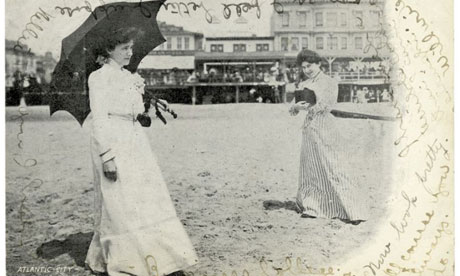

Thanks for the memories, Kodak – you made photographers of us all
The digital age of photography has been liberating, but we've lost something precious along the way

This is a sad day for anyone who feels nostalgic for the days of the"Kodak moment" – almost always a snapshot of a big family gathering, a perfect holiday, or a generally momentous personal event. When many of us were children in the 70s, 80s and indeed 90s, popular photographyflourished under the benevolent eye of Kodak, the once all-powerful giant that has now filed for bankruptcy protection.
For the vast majority of us, getting your photos developed meant taking the film along to the chemist and waiting a few days. When you opened the brightly coloured envelope, usually adorned with a happy kid playing with a balloon on a beach, it felt like you were opening a present. Inside were 24 shiny prints, together with their negatives. It all sounds so cumbersome now, so agonisingly slow, but at the time Kodak was almost as big a revolution as digital: cheap, easy-to-use cameras and colour film meant anyone could take treasured family snapshots. No studio was required. "You push the button," ran its slogan, "we do the rest."
The ritual of getting the film developed had two effects. It made the photographs more precious; but, at the same time, it put us in our place. We were not "photographers", just people taking snaps. To be a proper photographer, you needed your own darkroom. You needed to be able to talk about apertures. You needed a very expensive camera. And you definitely needed a tripod.
Popular cameras back then were rarely good enough to gratify any aesthetic pretensions. But on the omnipresent Kodak film, the results were bright and colourful – and above all emotional. We put them in albums. We treasured them. Well, that turned out to be a very ephemeral moment. It is so different now. Who gets their pictures printed? I keep meaning to – but there are too many. Tens of thousands. Who can even find time to edit them, crop them, touch them up, let alone print them?
The precious memory of a Kodak moment has now turned into a permanent frenzy of picture-taking that leaves us with few images of weight or sentiment once the fun is over. The best way to keep a photograph in my sight is to make it a screensaver: that's where the holiday moments end up. Even very young children can use digital cameras well. And perhaps they make children of us all. The digital camera is a toy to play with; when we're done with it, we forget about the pictures.
There is no denying, however, that this new age of popular photography is liberating. Not usually one to grab the latest gadget, I got a digital camera early on and suddenly it made photography exciting. The quality of these cameras, with their precision lenses and vast canyons of digital memory, has meant the amateur no longer feels so amateur: if a Kodak moment was sentimental, a digital moment can be staggeringly aesthetic. Thus we have gone full circle – returning to the Victorian age, when amateur photographers took themselves very, very seriously. Many people have tripods for their digital cameras; for the rest, there is the immediacy of capturing moments, then more, then more – so many beautiful images that no one gives a damn about them afterwards. Press the button. Don't bother about the rest.
Look, I'm not that nostalgic for the Kodak age. It was also a time when"art photography" surrounded itself with a pious mystique, while popular snappers were stuck with fairly low-quality images that, by their nature, could never be especially fine or beautiful. Today, we can all experiment with the wonders that cameras have become. What we do not have – and will not have – are the cherished memories that photographs used to be.
Nenhum comentário:
Postar um comentário